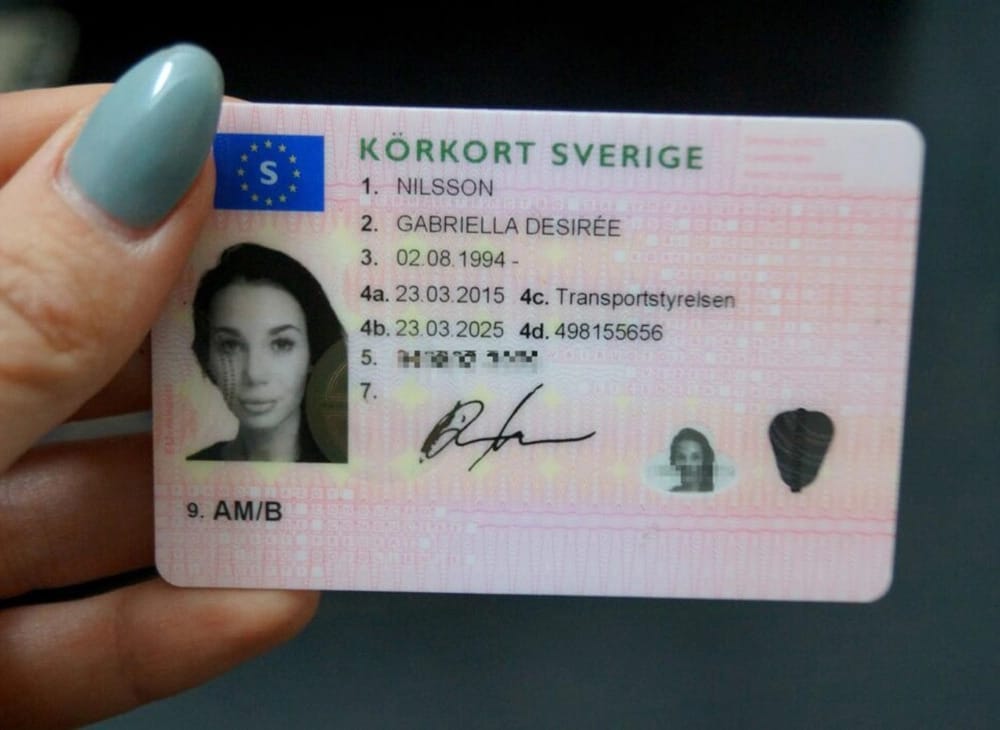10 Beautiful Images To Inspire You About Driver's License Without Taki…
페이지 정보

본문
Navigating the World Without a Driver's License: Exploring Alternatives and Implications
In today's world, where mobility is a foundation of life, the idea of living without a driver's license might seem overwhelming. Nevertheless, for some people, the decision to forgo a driver's license is a conscious option driven by numerous factors, including environmental concerns, expense, and personal preference. This short article explores the options to driving and the implications of living without a driver's license, offering a thorough guide for those considering this way of life.
Understanding the Decision
Selecting not to have a driver's license is an individual decision that can originate from several reasons. For some, it's a dedication to decreasing their carbon footprint and promoting sustainable living. Others find the cost of owning and preserving a car excessive, while some merely prefer the convenience and flexibility of other modes of transport. Despite the inspiration, living without a driver's license requires cautious planning and a willingness to adjust.
Alternatives to Driving
Public Transportation
- Buses and Trains: Public transport systems, such as buses and trains, are typically the most reliable and cost-efficient options. They are available in many city locations and provide a structured way to browse cities and rural regions.
- Subway and Light Rail: In larger cities, subways and light rail systems offer fast and effective travel, often bypassing heavy traffic and decreasing travel time.
Ride-Sharing Services
- Uber and Lyft: köpa svenskt körkort These popular ride-sharing apps supply on-demand transportation, making it easy to navigate without a car. They are particularly useful for late-night travel and in locations with limited public transport.
- Carpooling: Joining or forming carpool groups can reduce expenses and ecological effect. Many neighborhood platforms and apps assist in carpooling for routine commutes.
Bicycles and E-Scooters
- Bicycles: Cycling is a healthy and environmentally friendly method to travel, specifically for shorter distances. Many cities have committed bike lanes and bike-sharing programs to motivate this mode of transportation.
- Electric Scooters: E-scooters are a trendy and practical choice for fast, short journeys. They are frequently available through rental services in metropolitan areas and can be a fun option to conventional modes of transportation.
Strolling and Jogging
- Strolling: For those living in walkable communities, strolling is a simple and effective method to stay active and get around. It's complimentary, needs no special devices, and benefits the environment.
- Jogging: Similar to walking, jogging can be a healthy and affordable method to travel, specifically for short distances.
Electric and Hybrid Vehicles
- Electric Scooters and KöPa A1 KöRkort Online Bikes: For those who still want the benefit of an individual automobile but are concerned about the environment, electrical scooters and bikes are a feasible choice. They are low-maintenance and produce less emissions.
- Hybrid Cars: If the choice to prevent a driver's license is mostly due to environmental issues, however the need for a car is inescapable, hybrid vehicles use a middle ground. They combine traditional gasoline engines with electric motors to reduce fuel intake and emissions.
Telecommuting and Remote Work
- Work from Home: Many business now use remote work choices, allowing workers to work from home or other areas. This can considerably minimize the need for everyday travelling and the associated costs.
- Virtual Meetings: Technology has made it possible to carry out company conferences and other interactions practically, additional decreasing the need for travel.
Ramifications of Living Without a Driver's License
Financial Savings

- Lowered Vehicle Costs: Not having a car indicates preventing expenses such as car payments, insurance coverage, maintenance, and fuel.
- Public Transportation Costs: While mass transit does have expenses, they are normally lower than those associated with owning a car.
Environmental Impact
- Lower Carbon Emissions: By avoiding making use of personal lorries, people can significantly decrease their carbon footprint, contributing to a more sustainable environment.
- Reduced Traffic Congestion: Fewer automobiles on the roadway can lead to decreased traffic jam, making travel more effective for everyone.
Health Benefits
- Increased Physical Activity: Using options like walking, running, and cycling can improve physical health and mental wellness.
- Lowered Stress: Avoiding the everyday hassles of driving, such as traffic and parking, can result in a more unwinded and worry-free lifestyle.
Social and Community Engagement
- Neighborhood Connections: Relying on public transport or ride-sharing services can cultivate a sense of community and social interaction.
- Support for KöPa A1 KöRkort Local Businesses: Walking or cycling to regional services can assist support the regional economy and minimize reliance on large, ecologically hostile corporations.
Legal and Practical Considerations
- Identification Issues: In many countries, a driver's license functions as a primary form of recognition. People without a license might require to carry alternative types of ID, such as a passport or state-issued ID card.
- Travel Restrictions: Without a driver's license, travel to remote locations or locations with restricted public transport can be tough. Planning ahead and using alternative transportation methods is vital.
FAQs
Q: How can I navigate if I reside in a backwoods without a driver's license?
- A: In rural areas, alternatives like ride-sharing services, carpooling, and public transport may be restricted. Think about signing up with neighborhood groups or online platforms to find regional carpooling options. Electric scooters and bikes can also work for much shorter distances. Furthermore, many rural locations have community transportation services that can be accessed for important trips.
Q: Can I still travel internationally without a driver's license?
- A: Absolutely. A driver's license is not required for many international travel. However, you might require a passport or other kinds of recognition. For countries where driving is necessary, you can lease a car with a valid driver's license or usage regional transportation services.
Q: What are the best apps for finding ride-sharing and carpooling options?
- A: Popular apps for ride-sharing include Uber, Köpa A1 Körkort Lyft, and Bolt. For carpooling, Waze Carpool, Ridester, and Scoop are extremely advised. These apps frequently offer real-time details on available trips and help link you with drivers heading in the very same instructions.
Q: How do I handle without a driver's license if it is needed for numerous kinds of recognition?
- A: In many locations, a state-issued ID card or a passport can work as a main kind of identification. It's also a great idea to bring numerous forms of ID, such as a credit card or a citizen registration card, to ensure you are prepared for numerous situations.
Q: Are there any health threats associated with using public transport?
- A: While public transport can expose individuals to a higher danger of transmittable diseases, especially in crowded conditions, the benefits frequently surpass the dangers. Practicing great health, such as cleaning hands frequently and using a mask, can help mitigate these threats. Furthermore, lots of mass transit systems have executed precaution to secure passengers.
Q: What are the ecological benefits of not driving a car?
- A: Not driving a car can significantly minimize your carbon footprint. Automobiles are a significant source of greenhouse gas emissions, and by going with public transport, biking, or strolling, you can contribute to a healthier environment. This likewise helps in reducing air contamination and traffic jam, improving general quality of life.
Living without a driver's license is a possible and frequently useful choice for lots of individuals. By exploring and using alternative modes of transportation, one can save money, minimize their environmental effect, and improve their health and wellness. While there are obstacles, such as browsing identification and travel issues, the benefits typically make the effort rewarding. Whether driven by individual worths or useful factors to consider, the decision to forgo a driver's license can result in a more sustainable and satisfying way of life.
Additional Resources
- Public Transportation Apps: Transit, Moovit, Citymapper
- Cycling and Walking Apps: Strava, MapMyRide, Google Maps
- Neighborhood Carpooling Platforms: Waze Carpool, Ridester, Scoop
- Remote Work and Telecommuting Tools: Zoom, köpa Körkort Online A1 Köpa C Körkort Online (Full Piece of writing) Microsoft Teams, Slack
By welcoming these options, individuals can produce a lifestyle that aligns with their worths and needs, adding to a more sustainable and linked world.

- 이전글10 Facts About Mystery Boxes That Will Instantly Get You Into A Great Mood 25.03.01
- 다음글The 10 Most Scariest Things About Buy Northern Ireland Driving Licence 25.03.01
댓글목록
등록된 댓글이 없습니다.
